CONTACT
© Fyxer AI Limited. Company number 15189973. All rights reserved.
Begin your day with emails neatly organized, replies crafted to match your tone and crisp notes from every meeting.
© Fyxer AI Limited. Company number 15189973. All rights reserved.
© Fyxer AI Limited. Company number 15189973. All rights reserved.
© Fyxer AI Limited. Company number 15189973. All rights reserved.
Deleted an important email by accident? Don’t panic — it happens to everyone. Whether you cleared your inbox too fast, hit Delete instead of Archive, or lost messages after a sync issue, there’s often a simple way to get them back. Most major platforms, including Gmail and Outlook, keep deleted emails in a temporary folder before they’re permanently erased. That short window can make all the difference if you act quickly.
Recovering deleted emails comes down to knowing where to look and which tools can help. With the right steps, you can restore what’s missing and put better systems in place to keep it from happening again. From built-in recovery options to admin-level restores, there are several ways to retrieve lost messages and avoid repeating the same mistake twice. Here’s how to take control of your inbox again — calmly, efficiently, and without calling IT for help.
When you delete an email in Gmail, it moves to the Trash folder for 30 days before being permanently removed. You can recover any email within that window.
On desktop, open Gmail and scroll down the left sidebar. Click More, then select Trash.
If you’re on mobile, tap the Menu icon (three horizontal lines), scroll, and choose Trash.
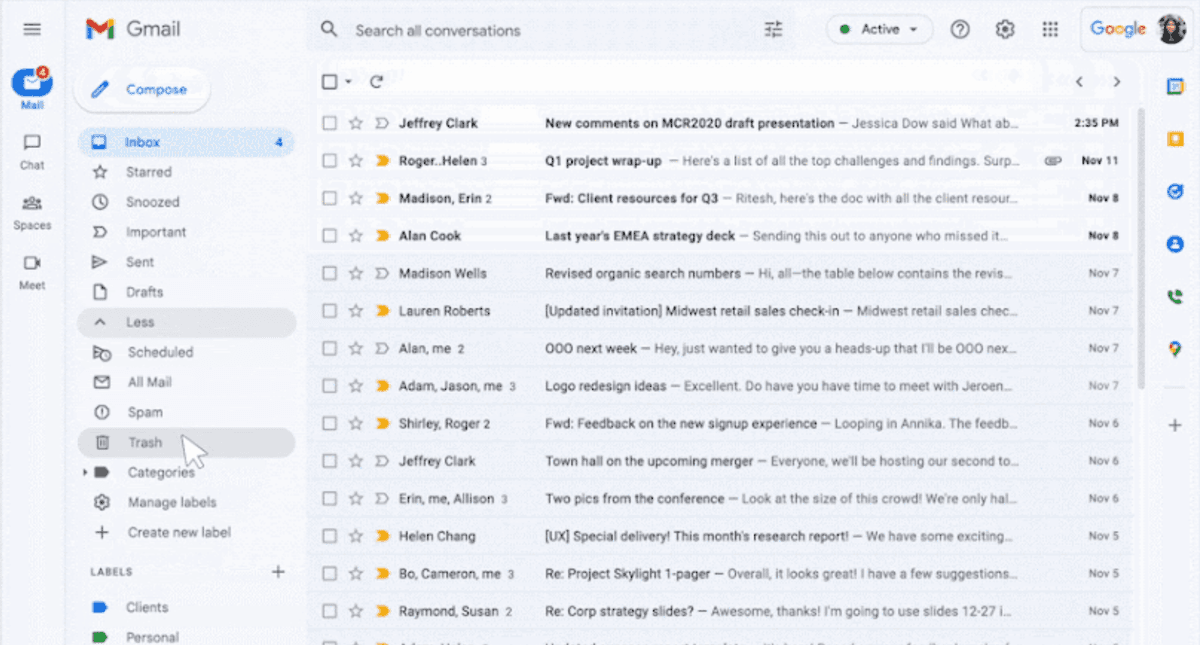
Tick the box next to each message you want back.
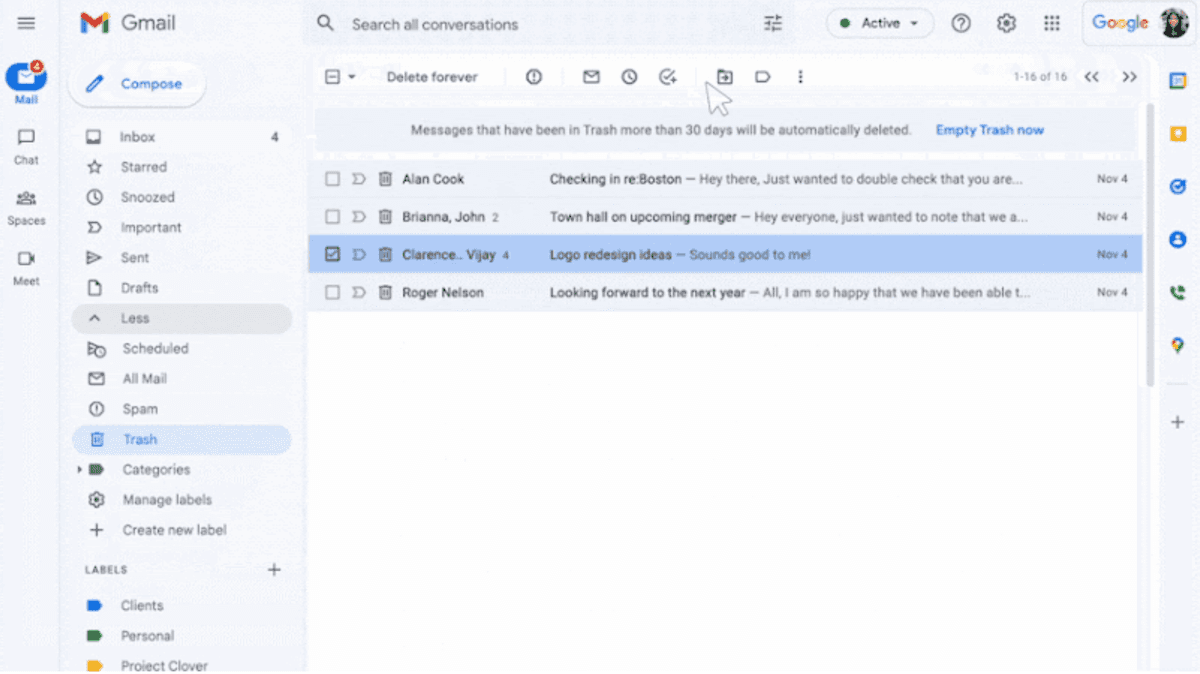
Click Move to and select Inbox (or another folder). The email will immediately reappear where you sent it.
Tip: Use the Gmail search bar and type in:trash [keyword] to find specific deleted emails faster.
Read more: How to find archived emails in Gmail
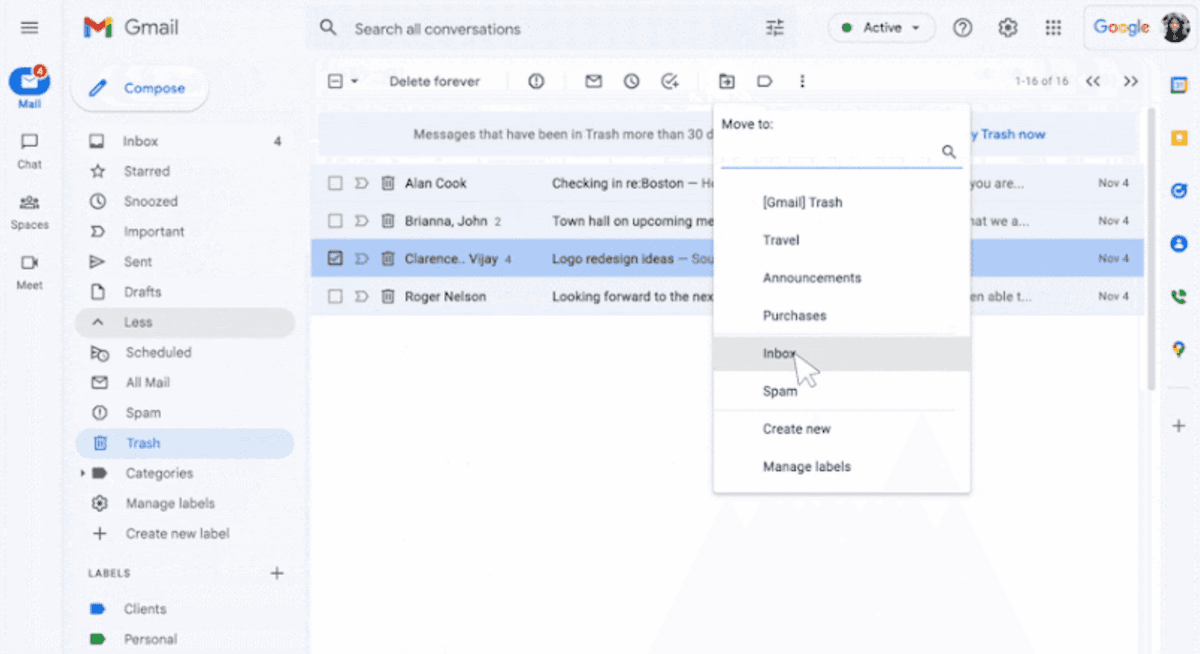
If an email has been removed from the Trash folder after 30 days, you still have one option: Google’s Message Recovery Tool.
Google sometimes restores messages lost due to accidental deletions or technical issues. However, this is not guaranteed — success depends on whether the data still exists on their servers.
If your Gmail is part of a Google Workspace account, your admin may be able to restore deleted messages from the admin console for up to an additional 25 days after permanent deletion.
Microsoft Outlook has two stages of deletion:
Go to the Mail view. In the folder pane, select Deleted Items.
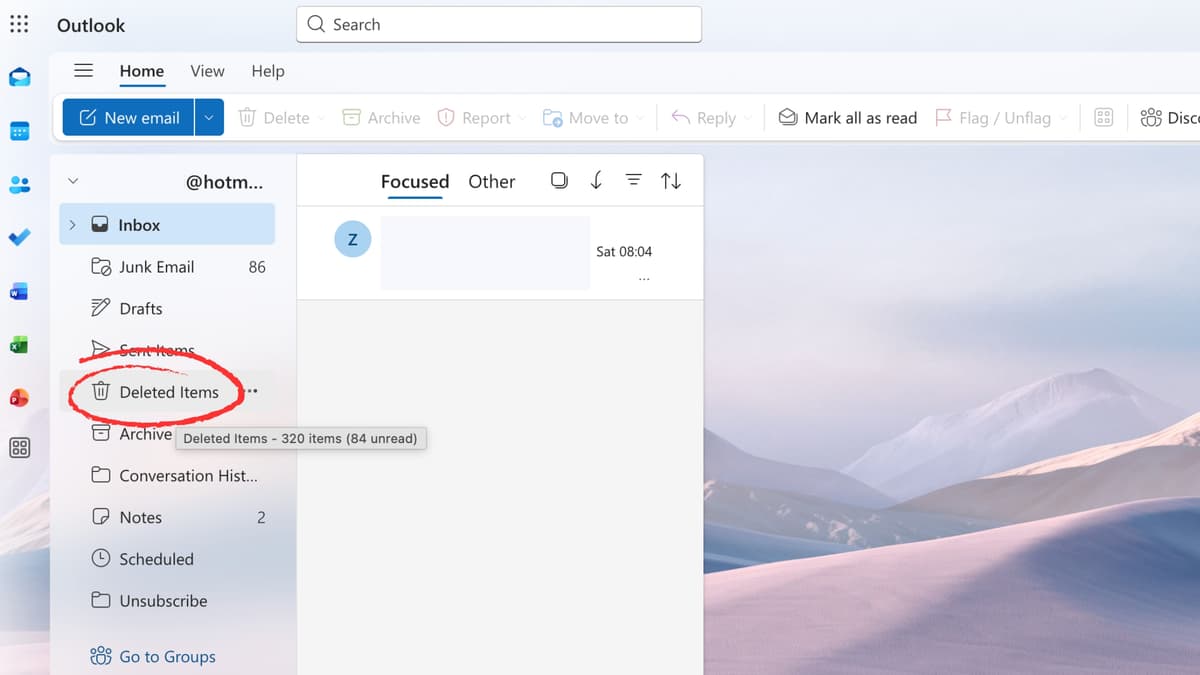
Choose one or more emails, right-click, and select Move → Inbox, or drag them directly to another folder.
Related read: How to archive emails in Outlook
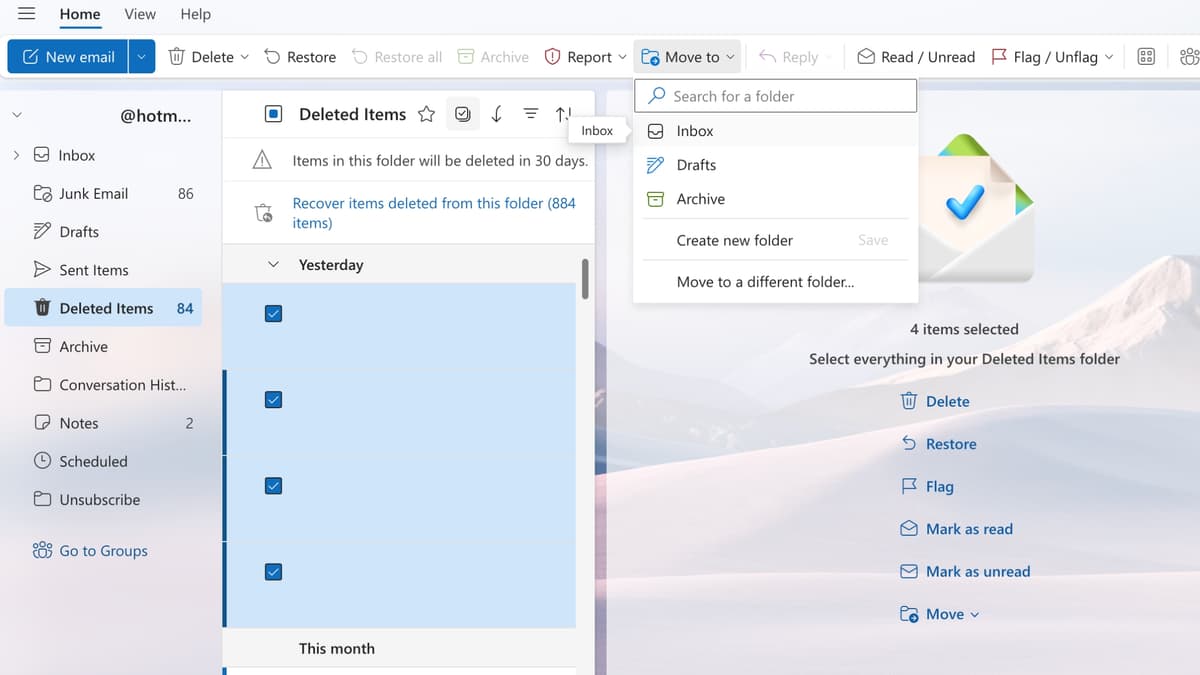
If your email isn’t in the Deleted Items folder, you may still be able to restore it.
Microsoft retains permanently deleted items for up to 14 to 30 days, depending on your organization’s retention policy.
Note: After this period, items are purged and cannot be recovered.
If you’re using the web version of Outlook (Outlook.com):
Outlook and Microsoft 365 mailboxes typically retain deleted items for 14 days by default, though administrators can extend this period to a maximum of 30 days using Exchange Online settings.
Both Gmail and Outlook mobile apps make it easy to retrieve deleted messages.
These methods work the same on both iOS and Android. Emails recovered on mobile will sync instantly across your desktop and web apps.
While recovery tools are useful, prevention is better. A few quick habits can help you avoid losing important messages altogether.
If you think you might need an email later, use Archive instead of Delete. Archived messages disappear from your inbox but stay searchable under All Mail.
Related read: How to find, view, and recover archived emails
Create regular backups:
Automate email organization to prevent clutter and reduce accidental deletion. For example, in Gmail, you can set up filters to automatically label and archive messages from certain senders.
Turn on two-step verification in your Gmail or Outlook settings. It protects your account against unauthorized access — a major cause of data loss.
Check these folders weekly to spot important emails before they expire.
Losing an important email is stressful — but managing your inbox doesn’t have to be.
Fyxer helps professionals save time by organizing your inbox, drafting replies, and summarizing messages automatically. Your data stays private, your day stays productive, and your focus stays where it matters.
Start your free trial today at fyxer.ai
In Gmail, you can try the Message Recovery Tool, though results vary depending on how long ago the email was deleted and whether the data still exists on Google’s servers.
In Outlook, permanently deleted items can sometimes be restored through the Recover Deleted Items feature for up to 30 days, giving you one last chance to recover critical messages before they’re removed from Microsoft’s system.
Gmail stores deleted emails in Trash for 30 days before removing them automatically.
Outlook’s Deleted Items folder typically retains messages for 14 to 30 days, depending on your settings or your organization’s retention policy. After that, recovery usually requires admin access or backup restoration, so it’s best to act quickly if you notice something missing.
After 30 days, recovery depends entirely on your email provider. Gmail users can contact Google Support to request data restoration, although success isn’t guaranteed.
Outlook users may need their system admin to recover messages from a backup or server archive, especially if the mailbox is part of a managed Microsoft 365 account.
Yes. In managed accounts such as Google Workspace or Microsoft 365, IT administrators can often retrieve deleted emails from system backups or retention policies even after they disappear from your inbox. These tools are designed to protect business data, so it’s always worth checking with your admin before assuming an email is gone for good.
No. Archived emails stay safely stored in your account and can be found through search or in the All Mail folder. Deleted emails, on the other hand, are only kept temporarily before being permanently removed, which is why archiving is the safer choice when you might need something later.